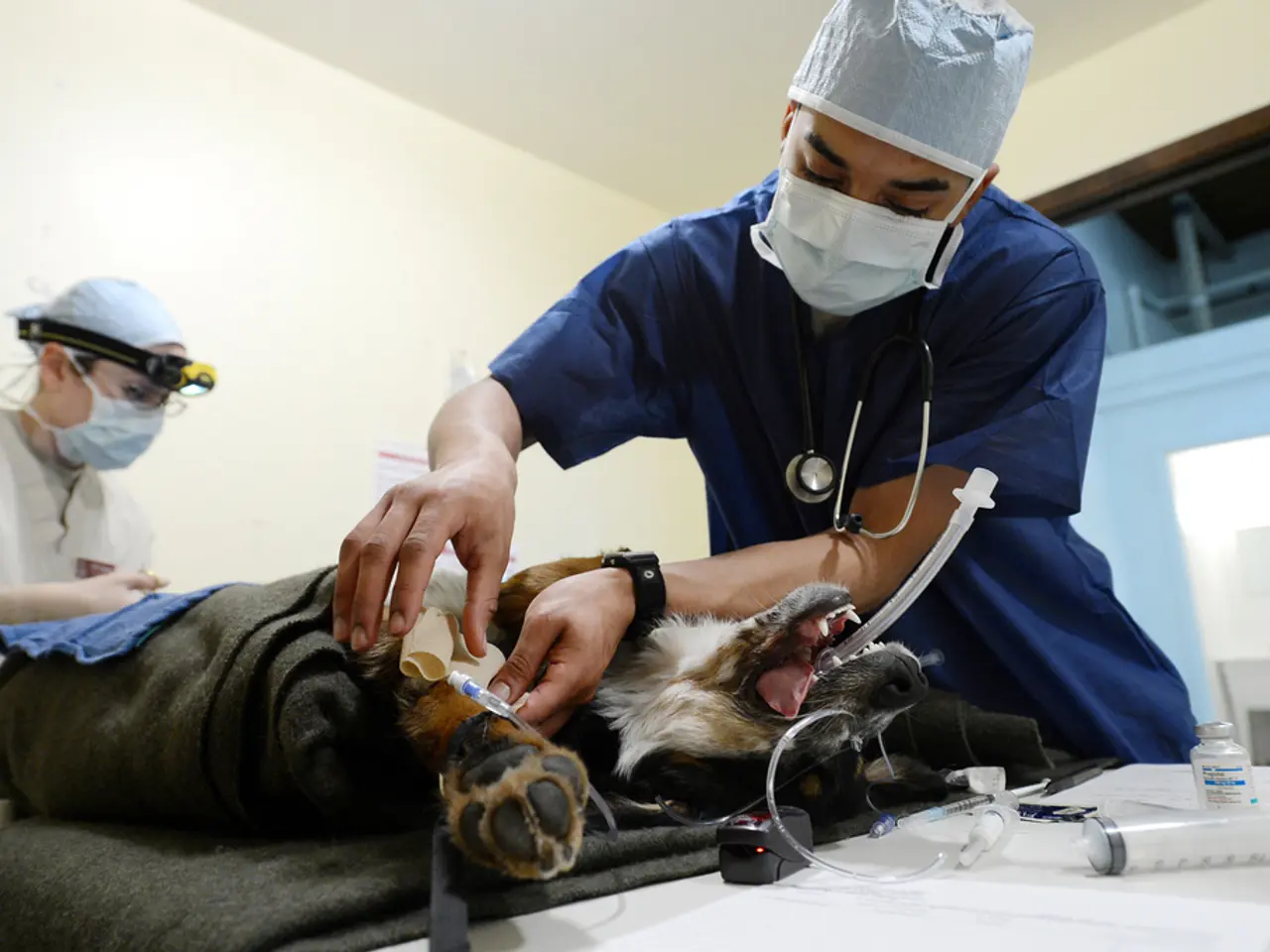Surgical Treatments for Persistent Dry Eye Conditions: A Comprehensive Guideline
In the battle against chronic dry eye, various surgical interventions have been developed to alleviate discomfort and improve the overall health of the eye. This article will explore the main surgical treatments for chronic dry eye, including punctal occlusion, eyelid and conjunctival surgeries, Intense Pulsed Light (IPL) therapy, and refractive surgeries.
Punctal Occlusion
Punctal occlusion is a cornerstone surgical intervention for chronic dry eye with tear deficiency. This procedure involves blocking tear drainage openings (puncta) to retain tears on the ocular surface. There are two methods: temporary or semi-permanent punctal plugs made of silicone or collagen, and surgical punctal cauterization.
Temporary punctal plugs offer quick symptom relief, with benefits typically seen within 24-48 hours. These plugs are reversible and require no anesthesia for insertion. However, risks include foreign body sensation, plug extrusion, excessive tearing, canaliculitis, or conjunctival irritation. Surgical punctal cauterization creates a permanent mechanical barrier, but it carries risks such as recanalization (around 21%) and is more invasive. It is often used in severe or refractory cases like ocular graft-vs-host disease (oGVHD).
Eyelid and Conjunctival Surgeries
More extensive surface-stabilizing surgeries, such as eyelid fissure narrowing, amniotic membrane transplantation (AMT), and conjunctival flap procedures, are used in severe ocular surface disease cases where conventional therapies fail. These procedures help stabilize the ocular surface, improve tear distribution and retention, and reduce surface inflammation. They carry surgical risks such as infection, scarring, and discomfort, but they can significantly improve symptoms in these challenging cases.
Intense Pulsed Light (IPL) Therapy
IPL therapy is a non-invasive light-based treatment effective for dry eye related to meibomian gland dysfunction (MGD). IPL heats eyelids to clear blocked glands, reduce inflammation, and stabilize the tear film. Benefits include symptom relief (redness, irritation, burning, watery eyes) with minimal side effects. IPL is not a surgery but a therapeutic intervention that can complement surgical approaches for dry eye caused by evaporative dysfunction.
Refractive Surgeries
Refractive surgeries, such as LASIK, PRK, SMILE, and ICL, are not treatments for dry eye but can cause or worsen dryness postoperatively by disrupting tear film or corneal nerves. PRK and SMILE tend to have fewer dry eye side effects than LASIK. ICL (implantable lens) is preferred for patients with preexisting dry eye as it avoids corneal laser ablation. If dry eye occurs after these surgeries, standard dry eye treatments including plugs or cauterization may be considered.
Amniotic Membrane Transplantation (AMT)
The amniotic membrane (AM), a layer of tissue obtained from the placenta during elective cesarean section procedures, is a safe and effective solution for managing chronic dry eye and other ocular conditions due to its anti-inflammatory and anti-scarring properties. AMT application can provide long-term benefits, lasting up to 9 months.
In summary, each treatment's benefits must be weighed against risks such as discomfort, infection, and permanence to tailor the best approach for the patient. Standard treatment options for chronic dry eye also include over-the-counter or prescription eye drops and lifestyle adjustments. In severe, untreatable cases, surgical procedures like minor salivary gland transplant (MSGT) may be considered.
- Science has developed numerous therapies and treatments for chronic dry eye, including punctal occlusion, eyelid and conjunctival surgeries, Intense Pulsed Light (IPL) therapy, and refractive surgeries, each with their unique advantages and risks.
- Punctal occlusion, a common surgical intervention, involves blocking tear drainage openings to retain tears on the ocular surface, and can be done temporarily or permanently, with silicone or collagen plugs or surgical cauterization respectively.
- Health-and-wellness and mental-health are not directly addressed in the battle against chronic dry eye, but maintaining good nutrition and skincare can indirectly contribute to overall eye health.
- In the realm of fitness-and-exercise, it's crucial to note that certain refractive surgeries like LASIK, PRK, SMILE, and ICL can cause or worsen dryness postoperatively, while PRK and SMILE tend to have fewer dry eye side effects than LASIK, and ICL is preferred for patients with preexisting dry eye.




